Epson Moverio BT-200 Augmented Reality Glasses Review

The explosion of the popularity of augmented reality devices is still ahead, and the few available gadgets are all the more interesting. Especially those that differ in an unusual approach or implementation. In particular, Epson Moverio BT-200, the second model of augmented reality glasses from the Japanese manufacturer. And today we bring to your attention a review of this curious device.
We wondered about the non-standard approach: the glasses are connected to an external system unit running Android 4.0.4 and having a touchpad. They have two translucent mini-displays with a total resolution of 960x540, as well as a camera that allows the use of scenarios of augmented reality. In addition, the manufacturer launched a store with glasses applications, Moverio Apps Market.
The device turned out to be universal. In addition to the aforementioned augmented reality, glasses are well suited for games and video viewing. For example, BT-200 is already used in medicine, imposing on the human body a scheme of blood vessels, which makes it easier for nurses to take blood from veins and arteries.
')
Main characteristics
| Display | 2 translucent LCDs (polysilicon active matrix) with a diagonal of 0.42 inches, 16: 9 format, total resolution 960x540 |
| The subjective size of the perceived image | 40 inches from a distance of 2.5 m, 320 inches from 20 m |
| Update frequency | 60 Hz |
| operating system | Android 4.0.4 |
| Pre-installed applications | Moverio Air, Moverio Apps Market, Moverio Mirror, SEViewer |
| Camera resolution | VGA |
| Wireless connection | Wi-Fi IEEE 802.11b / g / n, Bluetooth 3.0 |
| Interfaces | USB 2.0 (microUSB) |
| CPU | TI OMAP 4460, frequency 1.2 GHz, 2 cores |
| RAM size | 1 GB |
| Built-in memory | 8 GB |
| Memory card support | MicroSD, MicroSDHC up to 32 GB |
| Supported Video Formats | MP4 (MPEG4 + AAC / Dolby Digital Plus), MPEG2 (H.264 + AAC / Dolby Digital Plus); 3D video playback (horizontal stereo pair) |
| Supported Audio Formats | AAC, Dolby Digital Plus, MP3, WAV; Dolby Digital Plus technology |
| Recommended price | 35 000 rubles |
Design and construction
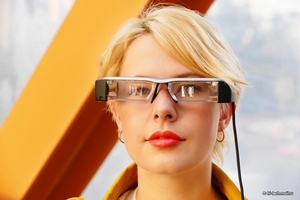

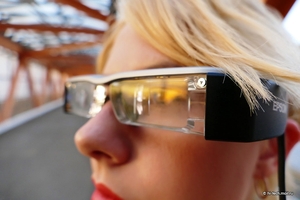
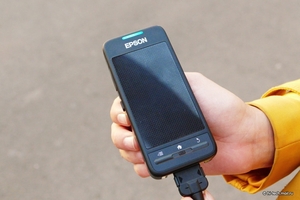
Externally, the system unit looks like a hybrid of a small smartphone and a solar battery. It contains the processor, memory, connectors, wireless communication modules. The system unit is connected with the wire with glasses, which still look more like a specialized tool than a fashion accessory.
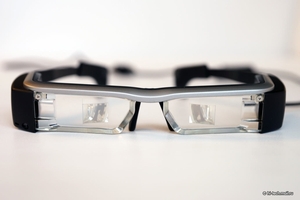




When folded, the dimensions of the glasses are 170x185x32 mm, weight - 88 grams. Quite weighty, but ergonomics at a height, so they can be worn for a long time without fatigue. The design of the BT-200 allows wearing over ordinary glasses, so there is no need to make a choice. Removable rubber nozzles on the arms allow you to adjust the landing points, depending on the hairstyle and structural features of the user's head. If necessary, a darkening nozzle can be attached from the outside.

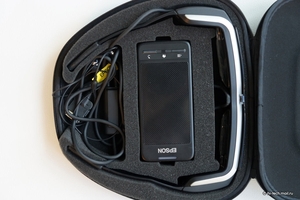
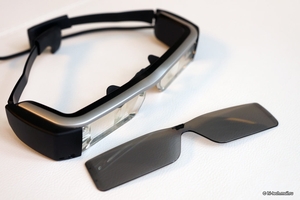
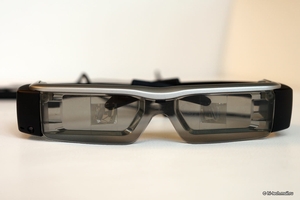
Points are supplied in a voluminous case, so you can not be afraid for their safety during transportation in luggage or hand luggage. Assembling glasses quality, without cracks, backlashes and squeaks.

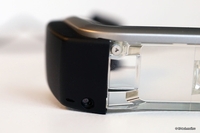
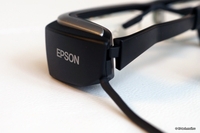



On the right is the lens of the integrated camera. The wire is connected near the hinge of the left bow. On the wire there is an intermediate block with a clothespin, equipped with a headphone jack (also included). The main problem is the non-detachability of the connection of the wire with glasses. When inaccurate or very active wearing there is a risk of chafing or kink.


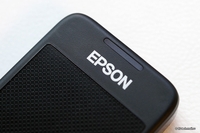
Let's take a closer look at the system unit. Under the large "screen" touchpad are three buttons that are responsible for calling the context menu, go to the main screen and go back. At the top, above the logo is a status LED.
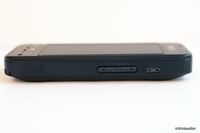


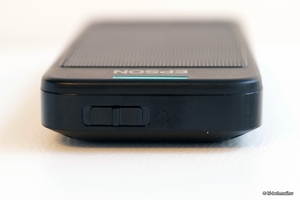
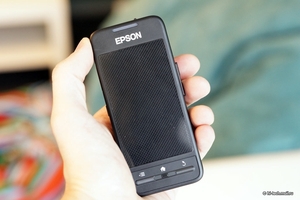
The dimensions of the system unit - 120x55x19 mm, weight - 124 grams. Pretty thick and not very comfortable in the hand.
At the top end of the system unit there is a device on / off slider, which is also responsible for locking the buttons. If you move and release it, it returns to the central position. At the bottom there is a proprietary connector for connecting with glasses. On the right side are microUSB connector and volume rocker. On the left side there is a compartment for the microSD card, a reset button (recessed into the case) and a function button, a kind of Ctrl, which allows simultaneously with the volume buttons to change the screen brightness and change the display mode - 2D or 3D. It is convenient to work with buttons, they are moderately large and prominent.
Interface and Management
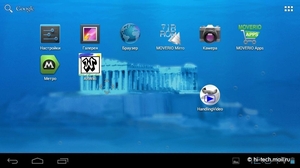

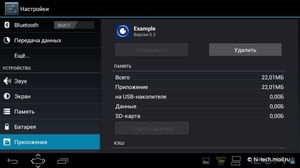
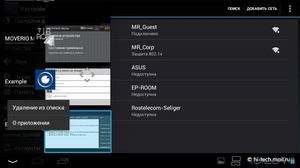
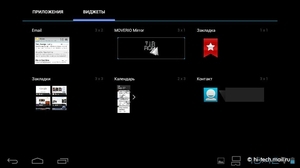

As you can see, Epson did not bother to create a proprietary graphical shell for Android. The control is the same as in the case with a smartphone, only “blindly” doing it is a bit unusual. Multitouch is supported, the touchpad sensitivity is at a good level, there is no desire to rub and put pressure on it with force. The developers have also introduced support for some “proprietary” gestures, but in some cases they have become too clever.

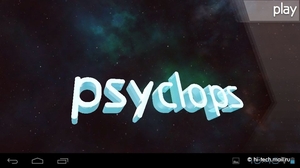


The glasses themselves are equipped with a gyroscope and an accelerometer, so it is possible to use scenarios in which the turns and tilts of the user's head matter. Primarily for the realistic effects of augmented reality.
Picture
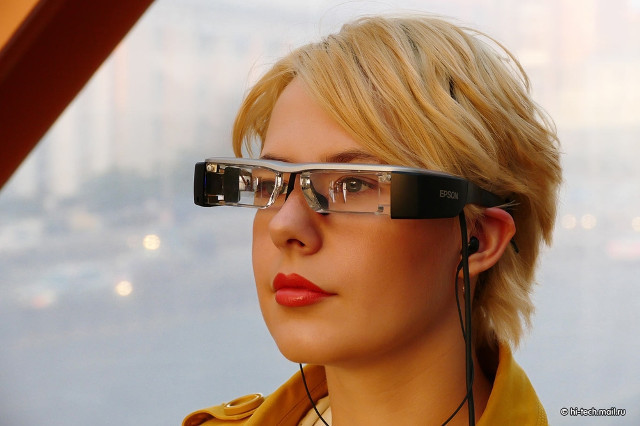
Two built-in display create the effect of a single image, both two and three-dimensional. Quite a specific feeling, which is not like the contemplation of the "whole" screen. The angle of view of the image is comparable to a 40-inch display from a distance of 2.5 meters.
Translucency in no way impairs image quality, it is generally invisible in the case of a “full-fledged” picture, and not augmented reality. An important feature of glasses is the need for their precise positioning so that the displays are strictly parallel with respect to the imaginary plane in which the user's eyes lie. Otherwise it will not be possible to focus on the image. The task of proper fit BT-200 are adjustable jumper on the nose and the above-mentioned nozzles on the arms.
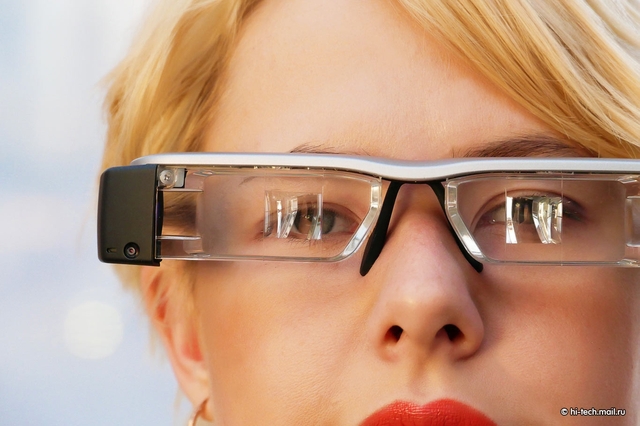
The image is bright and quite detailed, enough for comfortable watching movies. But the 3D effect turned out to be extremely good, but only the display of the horizontal stereo pair is supported.

If you have never used video glasses, then keep in mind that you need to get used to them. Some users who have tried them for the first time have a slight dizziness, regardless of the content viewed. The effect of habituation occurs fairly quickly, after a few hours.
Functionality

The productivity of iron is quite enough for the overwhelming majority of tasks, including video viewing and augmented reality. However, some "hard" games may not be able to score points. A very small number of video formats and codecs are supported by default, although this can be solved with some manual intervention. It also helps to connect Google Play or directly upload apk-files to the system.
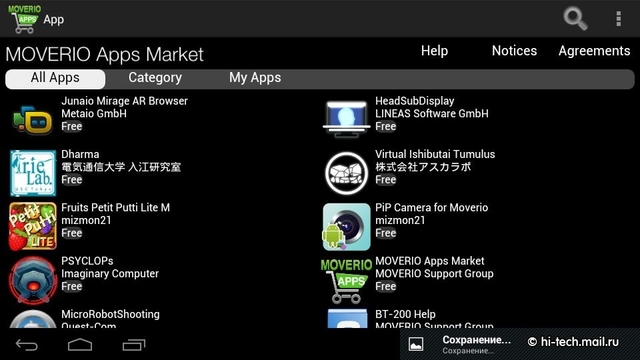

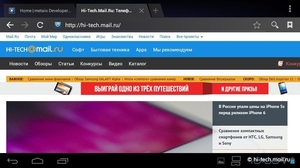


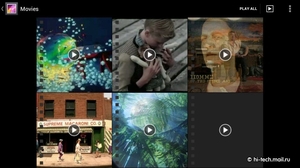



The reboot button mentioned above had to be used a couple of times during the week. Unfortunately, it was not possible to find out the patterns, therefore we considered that this was the dampness of one of the first copies.
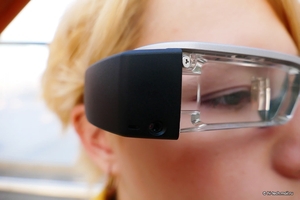
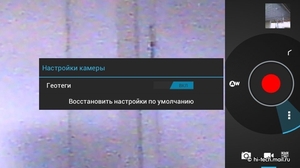
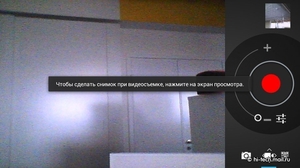
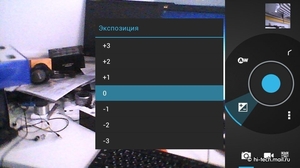
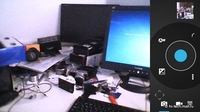
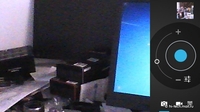
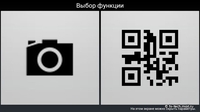
The built-in camera was created to provide the effect of augmented reality and the reading of QR codes. High-quality photo and video at its resolution and color reproduction is impossible.



The sound quality we really liked.

The built-in program Moverio Mirror allows you to broadcast the image between the glasses and the smartphone in both directions via Wi-Fi or Bluetooth. In this mode, the BT-200 can be used as an external display.


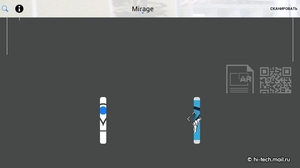
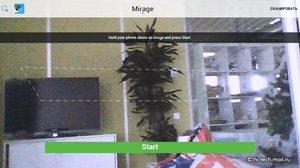

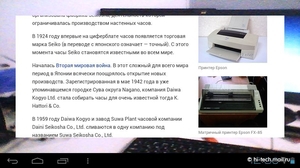
Of course, this is not the most important way to apply these glasses. Their skate is an augmented reality, and here the possibilities of the device are revealed as fully as possible. In addition to games, glasses can be used for all sorts of applied, entertainment, industrial and scientific tasks.
A non-removable battery at 2720 mAh provides 5-6 hours of active use of glasses. On the one hand, not so much, if compared with other augmented reality glasses, the result is quite satisfactory. An important consequence of the use of an external system unit with a battery is the absence of overheating of the glasses themselves.
Conclusion
At Epson this time turned out quite self-sufficient, interesting and promising product. Good performance, high-quality augmented reality effect and versatility are the strengths of the BT-200. However, first of all these glasses will be interesting for solving practical and scientific problems, and not for entertainment. That is, the main audience of the gadget seems to us more likely to be different companies interested in high-quality augmented reality glasses, and not ordinary users.Source: https://habr.com/ru/post/234511/
All Articles